A never-ending story
Sawfish Cultural Significance in Asmat
There is nothing called land. If we step into Asmat, we will be submerged in the mud, at least up to the ankles. This is because most of the Asmat area is a swamp. In addition, rivers are the only access for everyone to mobilize. Asmat is also called the land of a thousand rivers because of the countless rivers there, emptying into the Arafura Sea.
The entire area in Asmat is a traditional territory; of course, the people strongly believe in their ancestors. They also have a tradition of carvings as a part of their culture. Therefore, in our mission to track the presence of sawfish in Asmat, we use the cultural study method. First, we visited the Asmat Museum of Culture and Progress to get information and evidence of local culture related to sawfish. Second, we are mapping the traditional villages, which will provide information regarding the presence of sawfish and their cultural traces. In conservation efforts, cultural values need to be studied to avoid conservation actions that can destroy local culture and values. In addition, approaching the community by exploring their culture can strengthen the relationship between the community and conservationists to help enhance the efficacy and acceptability of conservation practice (Infield, 2017).
The following is a summary of our journey in exploring the sawfish culture in Asmat
1. Museum visit
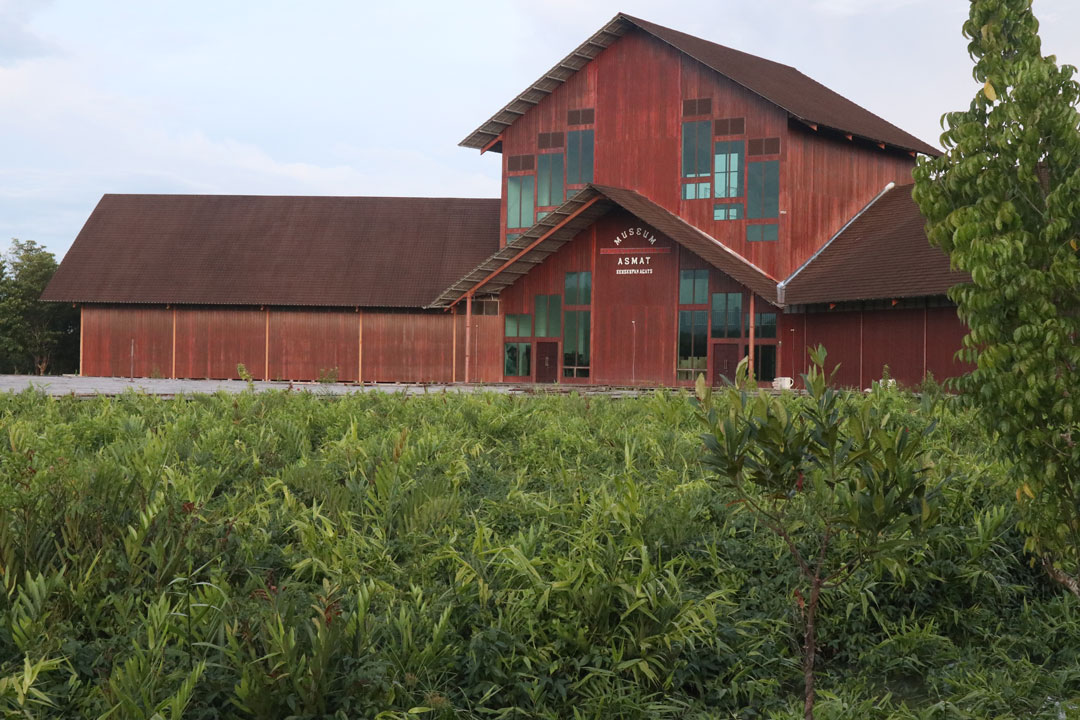
Asmat Museum of Culture and Progress. Photo © Sawfish Indonesia
During the research, we were headquartered in Agats, the capital city of Asmat. This city is small, so it is effortless for us to find the museum’s location. After obtaining permission from the museum curator, we were invited to enter the museum room. This is where the museum curator, Mr. Erick Sarkol, explained to us about the ancestors of the Asmat tribe. He also showed us some of his collection of carvings. We were so happy because there was a sawfish pattern among the hundreds of carvings stored. After getting the initial information, Mr. Erick suggested going directly to the sculptors to get information from them.
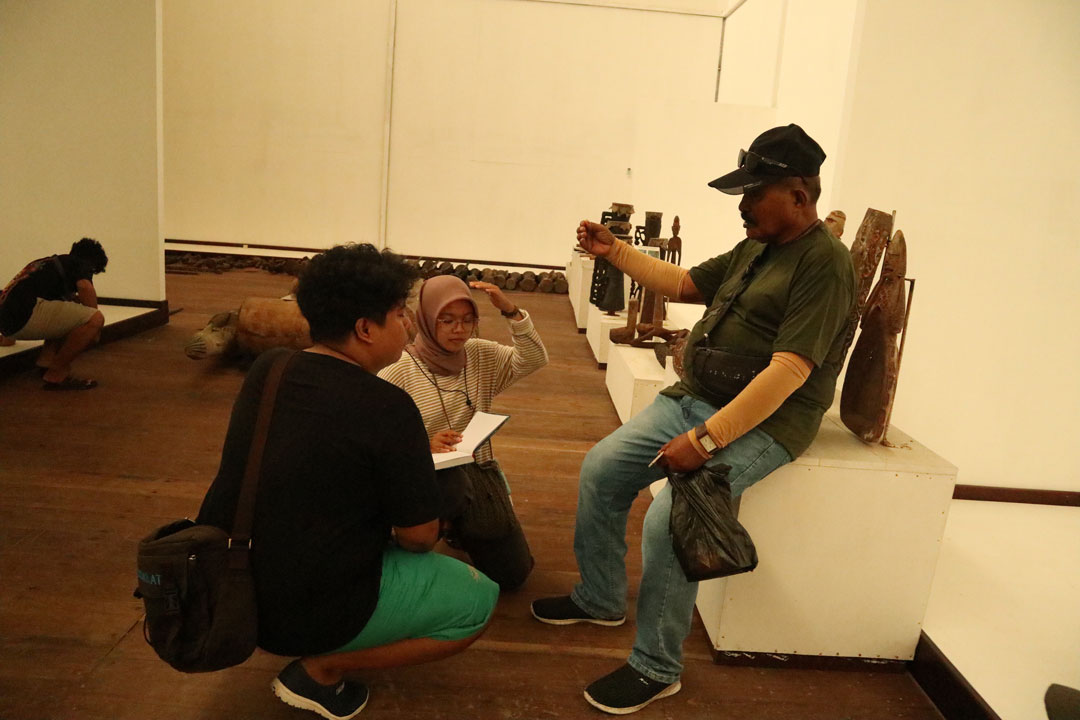
Mr. Erick Sarkol explained the culture of the Asmat tribe. Photo © Sawfish Indonesia
2. Traditional village expeditions
After discussing with the Asmat Fisheries Service and getting directions from the museum curator, we visited 20 traditional villages across ten districts. We collect information by visiting a traditional house called “Jew.” This house is a place to live for single men and traditional leaders.
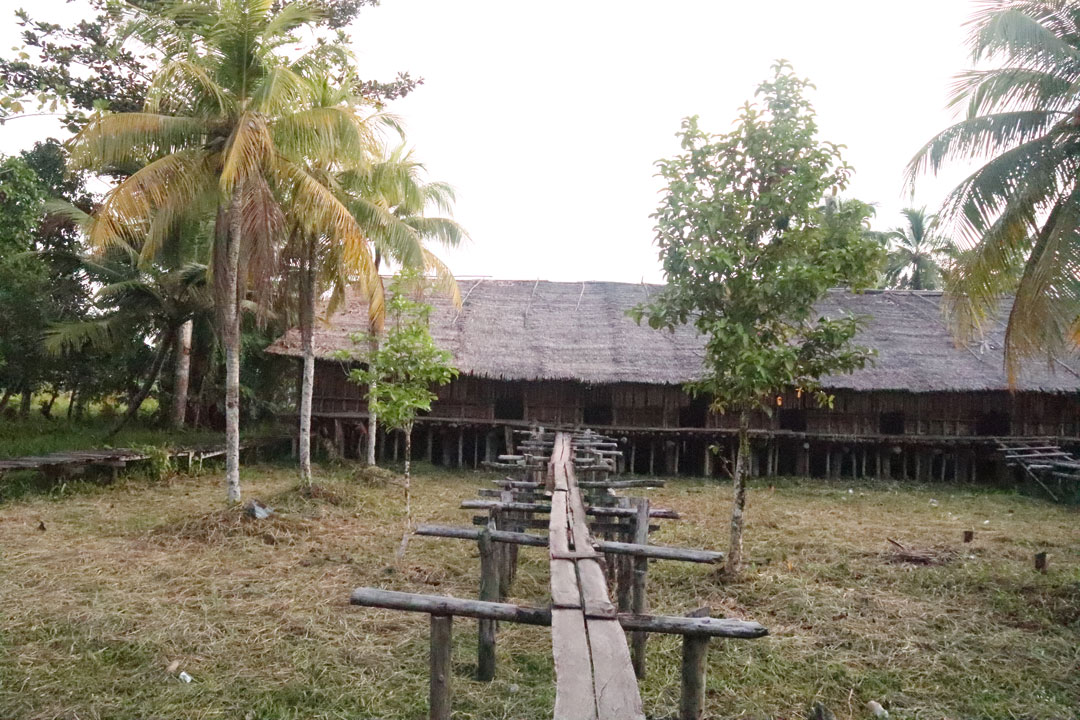
Traditional house of Asmat tribe “Jew.” Photo © Sawfish Indonesia
We learned various local sawfish names from them, one of which was called “Ar.” In short, Ar is one of the legends and symbols of the sacredness of several Asmat tribes and is related to their ancestors.
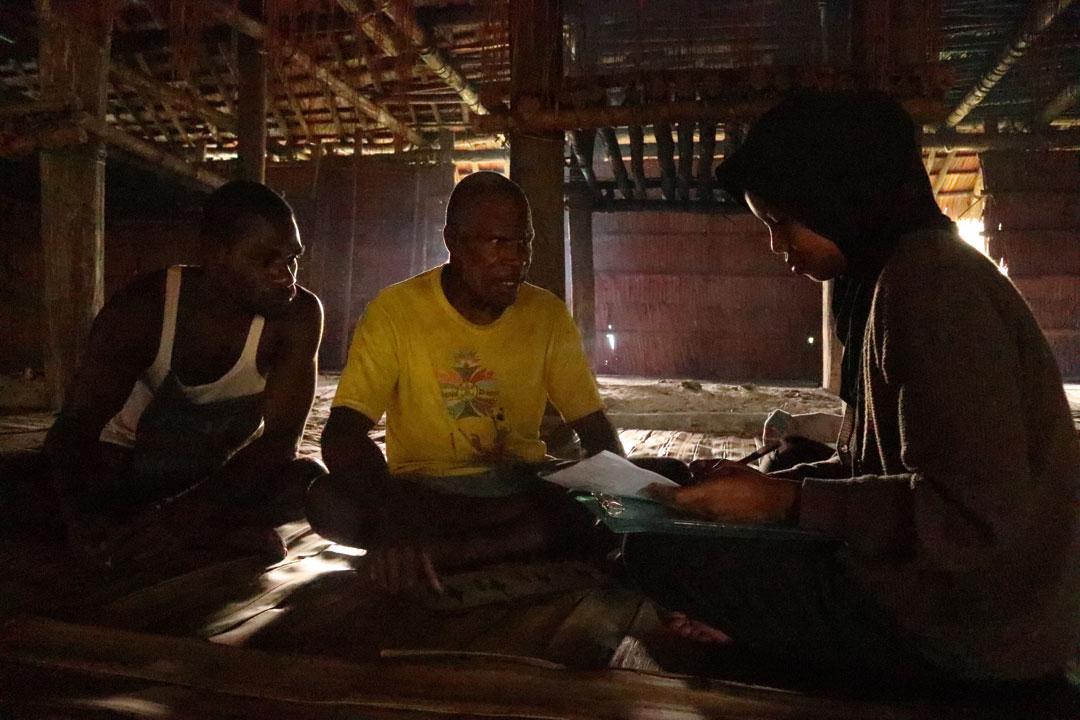
Interviewed local people. Photo © Sawfish Indonesia
3. Meet the sculptors
As directed by the museum curator, we headed to three traditional villages, Yaptambor, Santambor, and Sawa, to meet the sawfish carvers. This is where we get information about the story behind the carving.
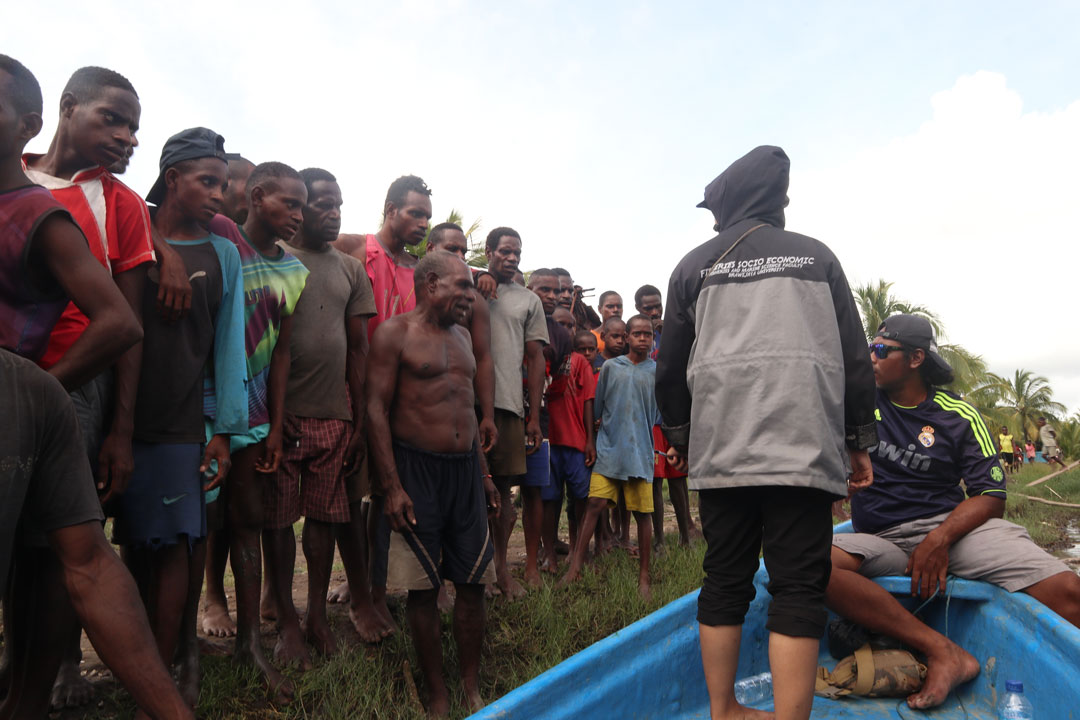
The first meeting with the sculptor from Santambor village. Photo © Sawfish Indonesia
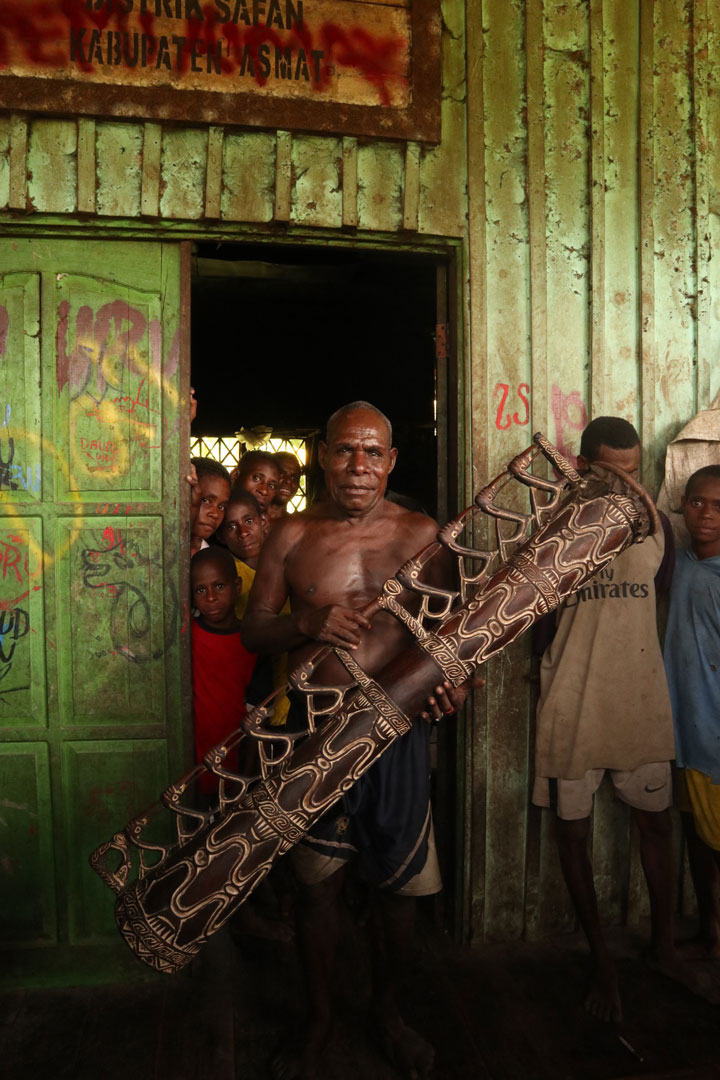
A sculptor from Santambor with his carving. Photo © Sawfish Indonesia
I will write about Ar and the story behind the sawfish carving in separate blogs to provide a more detailed storyline and enjoyable reading experience.
See you in my next story!
